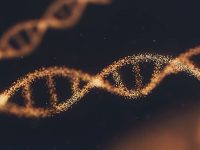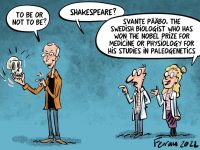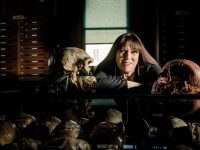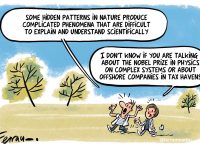Rosalind Franklin, beyond the legend
On the centenary of the birth of the British scientist
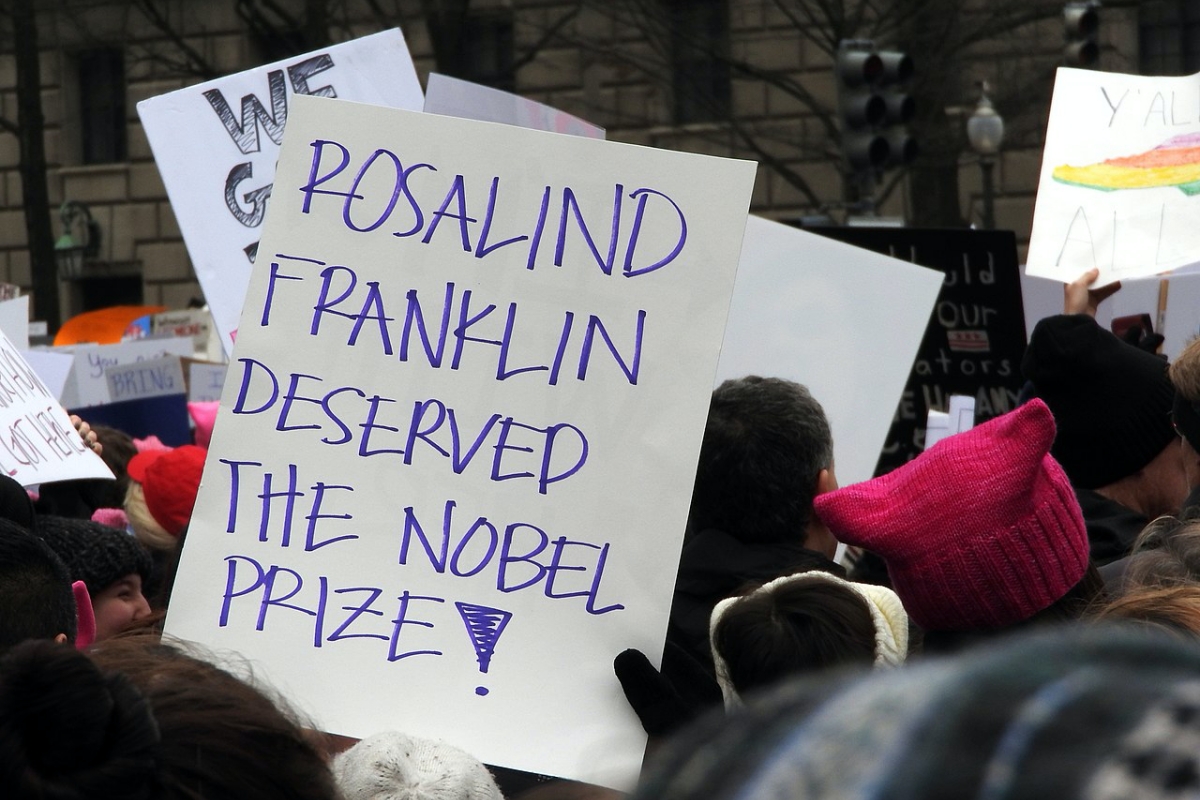
The history of science is contaminated by myths, and Rosalind E. Franklin (1920-1958) occupies a prominent place among the victims of misogyny in the scientific community. A decade after her passing, with the publication of James Watson’s The double helix: A personal account of the discovery of the structure of DNA, Franklin became the paradigm of the woman despised by her male colleagues, who took advantage of her work but failed to give her due recognition, including the Nobel Prize. An attentive reading of the history of molecular biology and the biographies of its main protagonists, including Rosalind Franklin, presents us, nevertheless, with a more multifaceted vision that provides some nuance to the simple myth surrounding the discovery of DNA’s double helix.
«Watson and Crick’s conviction about the primacy of DNA in the mechanism of inheritance helped them to reach the finish line first»
The history of the double helix model has been told many times: historians, journalists, scriptwriters, and playwrights, as well as the memories and witnesses of many of the protagonists, have taught us many details about how this iconic scientific model was generated. James Watson and Francis Crick, researchers at the Cavendish Laboratory in Cambridge, co-authored the model, but there were many actors who contributed directly or indirectly to its success: firstly, the scientists at King’s College in London, Maurice Wilkins and Rosalind Franklin, their most immediate competitors in the study of the structure of genetic material. And in the United States, a chemistry giant like Linus Pauling, who at Caltech in Pasadena was also pursuing a structural model of DNA. Watson and Crick reached the finish line in March 1953, closely followed by their colleagues at King’s and by Pauling, who was thrown off course by some incomprehensible chemical errors. Other supporting actors provided partial yet crucial information. Watson and Crick’s sly speculative ability and their conviction about the primacy of DNA in the mechanism of inheritance, persuaded by the idea that revealing the structure would enable the function to be understood, helped them to reach the finish line first.
Rosalind Franklin’s leading role
Franklin trained in physical chemistry and, despite her untimely death, had a brilliant career as a crystallographer working with very complex and poorly organised chemical structures. Working in X-ray diffraction of amorphous, non-crystalline materials was scary for most, but not for a scientist who was very skilled at hard laboratory work. After her doctorate she made an excellent description of the structures of coal during her stay in Paris. John Randall hired her as a crystallography expert for King’s Physics Department. In collaboration with doctoral student Raymond Gosling, she delved into the architecture of genetic material, the research that made her famous. Finally, she investigated the structure of various viruses in the Biomolecular Research Laboratory at Birkbeck College, directed by John D. Bernal: she thought her studies on the tobacco mosaic virus were her most successful work. The time spent studying the structure of DNA was relatively short, but together with Gosling she obtained some essential data to assemble the double helix puzzle created by the Canvendish.
«The press seemed more concerned with Stalin’s death, the conquest of Everest, the coronation of Elizabeth II, or Miller’s experiment than with the elegance of a genetic spiral staircase that unveiled one of life’s secrets»
Her stay at King’s College between 1951 and 1953 was marked by her poor personal relationship with Maurice Wilkins – a physicist who had worked on the Manhattan project and who had moved into biology in the post-war period. Unbeknownst to Wilkins, Randall removed him from the DNA X-ray diffraction project and assigned him to the newly arrived postdoctoral researcher. The personality clash between Rosalind and Maurice did the rest. Meanwhile in Cambridge, Watson and Crick were trying to build structural models of DNA from pieces of cardboard or tin, integrating chemical and physical data from many sources, including the crystallographic studies from King’s: the narrative of how they accessed this information has also sparked an entire industry. Finally, on 25 April 1953, three articles appeared in Nature: the one presenting the double helix model signed by Watson and Crick and two more pieces from King’s showing Wilkins’s and Franklin’s X-ray diffraction studies separately. In retrospect, and given the subsequent evolution of molecular biology, we find it hard to accept that the publication of the double helix model did not immediately gain general scientific favour, let alone enthusiastic media coverage. But at that time it was just that, a beautiful and elegant but speculative model lacking direct experimental support – the ideal of science practised by Franklin – that would still take decades to arrive. And the press seemed more concerned with Stalin’s death, the conquest of Everest, the coronation of Elizabeth II, or Miller’s experiment than with the elegance of a genetic spiral staircase that unveiled one of life’s secrets.
Many authors have outlined the value of Franklin and Gosling’s crystallographic data in the final configuration of the model. Watson and Crick were the first to explicitly acknowledge this in a paper published in 1954 in the Proceedings of the Royal Society. A short 1953 article on the model contained only a few references to «unpublished work» and the contributions of King’s scientists, phrases that had been approved and measured by Wilkins. But Franklin’s data have also been repeatedly described as crucial by many scientists (such as Klug and Bernal) and historians such as Michel Morange, Matthew Cobb, and Robert Olby. Crick and Watson even stated it clearly in their respective memoirs.
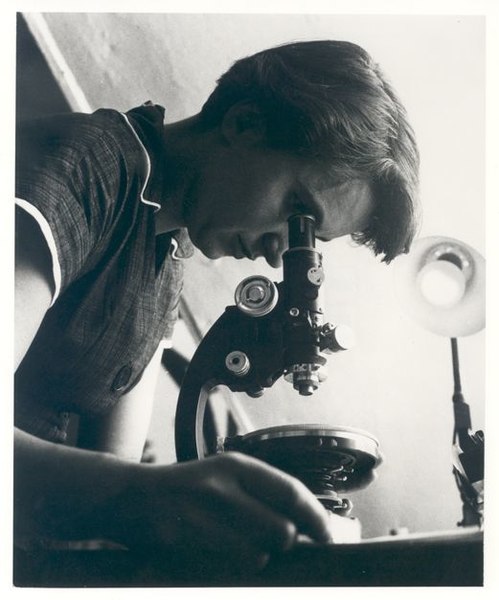
Jenifer Glynn’s book, written based on her family’s perception and Franklin’s letters, is primarily a deconstruction of the feminist myth around Rosalind and a clear vindication of the scientist. Photograph from Glynn’s personal collection / MRC Laboratory of Molecular Biology
Weaving personal visions into the fabric of history
In 1968 – ten years after Rosalind Franklin’s fatal cancer outcome – James Watson published his version of events in The Double Helix. Ironically, this book (a novel, according to some of the story’s protagonists) revealed for the first time the core importance of Franklin’s work in supporting the DNA model. But unfortunately it did so in a sarcastic tone that was not at all kind to the crystallographer: the narration is pleasant and didactic but Watson’s deplorable misogyny irritated everyone. Watson suggested that he had come across some of Franklin’s unpublished results in a rather unorthodox way.
In response to Watson’s book, Franklin’s personal friend Anne Sayre published Rosalind Franklin and DNA in 1975. This work collects many testimonies from the main participants and composes a more careful portrait of the scientist’s work while transforming her into a feminist icon. She also painted the portrait of her «enemies», especially Wilkins. In fact, Wilkins would later confess in his memoirs published in 2003 that Sayre’s book prompted him to write his own version of events, quite nuanced and with a tone of regret. But, without a doubt, the most complete and documented biography of Franklin would be the one by Brenda Maddox, coinciding with the 50th anniversary of the double helix model. Maddox portrays, in what is nearly the ultimate depiction, Rosalind Franklin as the great scientist that she was. She shatters some of the most popular legends – such as her father’s alleged opposition to Rosalind’s dedication to science –, further underpinning her decisive contribution to the definition of the double helix and disassociating her from the feminist myth. Even so, this historical and narrative fabric would be incomplete without a mention of Rosalind’s sister Jenifer Glynn’s perspective, published in 2012.
«Recognising all of Rosalind Franklin’s scientific merits is the best tribute we can offer»
Glynn’s book, based on her family’ perception and Franklin’s letters, is primarily a deconstruction of the feminist myth around Rosalind and an emphatic vindication of her scientific work. She was – we must insist – a woman with a strong personality, a rigorous scientist obsessed with questioning nature through experimentation, she was allergic to speculation (which was so dear to her Canvendish colleagues), she sought to be valued for her achievements, always putting science before ego. Glynn concludes: «Rosalind became a symbol, first of an argumentative swot, then of a downtrodden woman scientist, and finally of a triumphant heroine in a man’s world. She was none of these things, and would have hated all of them. She was simply a very good scientist with an ambition (…) to be a Fellow of the Royal Society before she was forty. But she died at thirty-seven.»
Coinciding with the centenary of her birth, an editorial in the journal Nature, which published so many of her works, noted that the role of the victim assigned to Rosalind Franklin in the legend of the double helix should not overshadow her brilliant contributions, which are often ignored when her scientific career is outlined. Our current understanding of coal, DNA, and viruses is indebted to a very intelligent woman who was particularly skilled in the laboratory: Bernal said that her X-ray diffraction photographs were the most beautiful ever taken. Recognising all her scientific merits is the best tribute we can offer.
References
Attar, N. (2013). Raymond Gosling: the man who crystallized genes. Genome Biology, 14, 402. http://genomebiology.com/2013/14/4/402
Cobb, M. (2015). Life’s greatest secret. The race to crack the genetic code. New York: Basic Books.
Glynn, J. (2012). My sister Rosalind Franklin. Oxford: Oxford University Press.
Holmes, K. C. (2017). Aaron Klug. A long way from Durban. Cambridge: Cambridge University Press.
Maddox, B. (2003). Rosalind Franklin: The dark lady of DNA. London: Harper Collins.
Morange, M. (2020). The black box of biology: A history of the molecular revolution. Cambridge, MA: Harvard University Press.
Nature. (2020). Rosalind Franklin was so much more than the ‘wronged heroine’ of DNA. Nature, 583, 492. doi: 10.1038/d41586-020-02144-4
Olby, R. (2009). Francis Crick: Hunter of life’s secrets. New York: CSHL Press.
Sayre, A. (1975). Rosalind Franklin and DNA. New York: Norton.
Watson, J. D. (1968). The double helix: A personal account of the discovery of the structure of DNA. New York: Athenaeum.
Wilkins, M. (2003) The third man of the double helix. Oxford: Oxford University Press.

